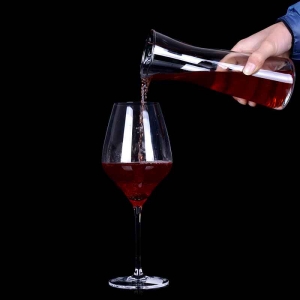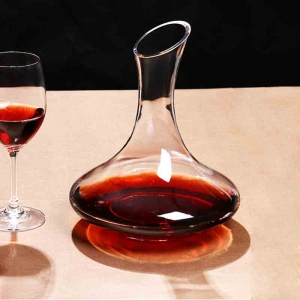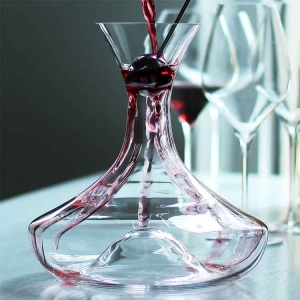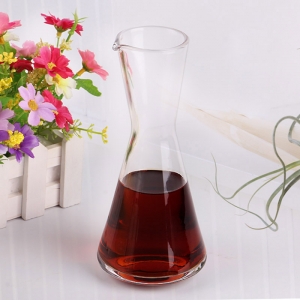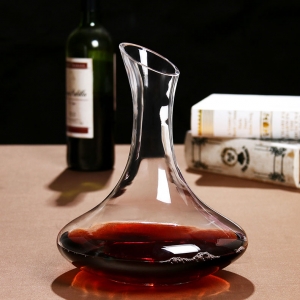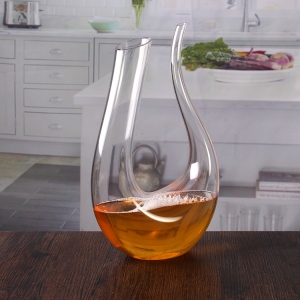Section 1: Understanding the Purpose of Decanting
To appreciate the significance of selecting the best wine decanter, it is crucial to understand the purpose of decanting. Decanters serve three primary functions:
1. Aerating Wine: Decanters facilitate the exposure of wine to oxygen, allowing it to breathe and oxidize. This process can soften tannins, enhance aromas, and unlock complex flavors.
2. Separation of Sediment: Older wines often develop sediment over time. Decanting separates the wine from these sediments, ensuring a clearer and more enjoyable drinking experience.
3. Presentation and Aesthetics: Elegant decanters are also used for presentation purposes, adding a touch of sophistication to wine service.

Section 2: Types of Wine Decanters
2.1 Traditional Wine Decanters
2.1.1 Classic Glass Decanters: These decanters feature a wide base and a narrow neck, facilitating a large surface area for oxygen contact. They are ideal for younger wines and offer an aesthetically pleasing presentation.
2.1.2 Duck Decanters: These whimsical decanters are shaped like ducks, combining functionality with a unique design. They are an excellent conversation starter at wine tastings or social gatherings.
2.1.3 Ship Decanters: Inspired by the shape of ships, these decanters have a broad base that provides ample space for aeration. Their elegant design is perfect for serving a variety of wines.
2.2 Modern Wine Decanters
2.2.1 Aerator Decanters: Designed with an integrated aerator, these decanters provide instant aeration as the wine is poured into the decanter. They are suitable for individuals seeking quick aeration without compromising on flavors and aromas.
2.2.2 Wide-Bottom Decanters: These decanters feature a wide base and a large surface area, allowing for optimal exposure to oxygen. They are particularly effective for enhancing the aromas of young and bold red wines.
2.2.3 Electric Decanters: Utilizing technology, electric decanters accelerate the aeration process, saving time for those seeking instant results. They are equipped with built-in air pumps and filters for efficient aeration.
2.3 Specialized Wine Decanters
2.3.1 Aerating Pourer: A compact and affordable option, an aerating pourer is a simple attachment that fits directly onto the wine bottle. While not a traditional decanter, it enhances the wine’s flavors and aromas as it is poured.
2.3.2 Wine Aerator Stopper: A wine aerator stopper combines the functions of a wine stopper and aeration device. It fits directly into the wine bottle, allowing for a controlled and slow aeration process.
Section 3: Factors Influencing the Choice
3.1 Wine Type: Different wines have varying aeration needs. Younger red wines and bold varietals typically benefit from wider decanters, while delicate white wines may require a more streamlined shape.
3.2 Aesthetic Appeal: Choosing a decanter that complements your style and preferences adds to the overall enjoyment of the wine-drinking experience. Different designs can enhance table décor and ambiance.
3.3 Ease of Use and Cleaning: Consideration should be given to the decanter’s design, ensuring that it is easy to pour from and clean. Simple shapes with wide openings generally offer convenience in use and maintenance.
3.4 Price Range: Wine decanters come in a range of prices, from affordable options to high-end designs, so considering your budget is crucial.
Conclusion
In conclusion, selecting the best wine decanter requires an understanding of its purpose, knowledge of the various decanter types, and consideration of personal preferences. A traditional, elegant glass decanter may suit those who value the aesthetics and traditional aspects of wine decanting. Modern, specialized decanters may appeal to those seeking practical and time-saving methods. Ultimately, the choice depends on the individual’s particular needs, wine preferences, and budget. By following this guide, you will be better equipped to make an informed decision and experience the full potential of your wine by choosing the perfect decanter. Cheers to an enhanced wine experience!

